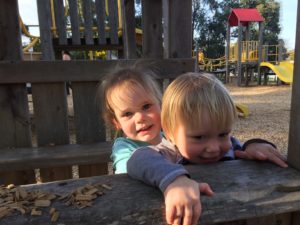Playgrounds come in all forms including traditional structured equipment such as slides, swings and monkey bars, natural playspaces that provide unstructured spaces for learning and spontaneous play, or a mixture of both.
A well-designed playground will stimulate a child’s imagination and encourage them to explore new and different ways to play.

The majority of playground injuries are due to falls from playground equipment – these typically result in fractures, however they can also lead to more serous outcomes like head injuries.
Most playground injuries can be prevented, or their severity reduced, by good planning, design and maintenance to avoid playground hazards. A playground hazard is anything in a playspace that has the potential to cause serious injuries. Hazards differ from challenges and risks – it is important that children are provided with opportunities to experience risk and challenge in playgrounds.
Active adult supervision of children at play and ensuring children are using equipment that is appropriate for their age, size and abilities, are also important factors in reducing the risk of serious injury for children.
The Australian Standards for playgrounds have been developed to provide guidelines for the design, installation, maintenance and operation of playgrounds. They are not intended to provide totally risk free environments, they focus on the elimination of hazards likely to cause serious life threatening injuries.
The Australian Standards should be consulted by anyone planning, designing, building or maintaining a playground. For a list of the current Australian Standards for playgrounds, please view the playground standards fact sheet in the resources section below. Full copies of the Australian Standards can be purchased from Intertek Inform.